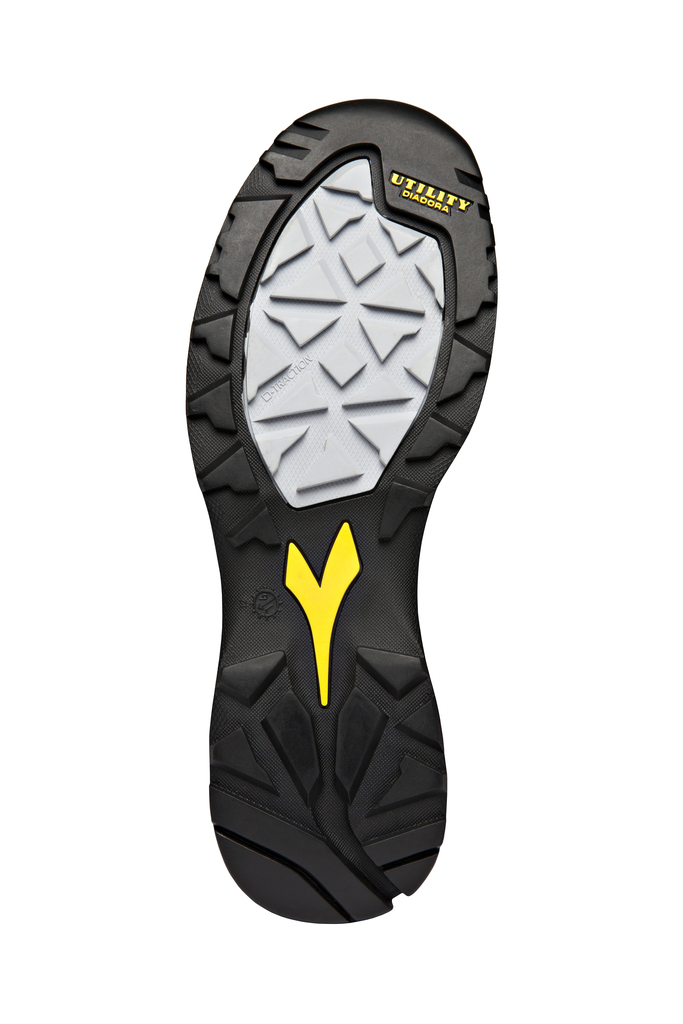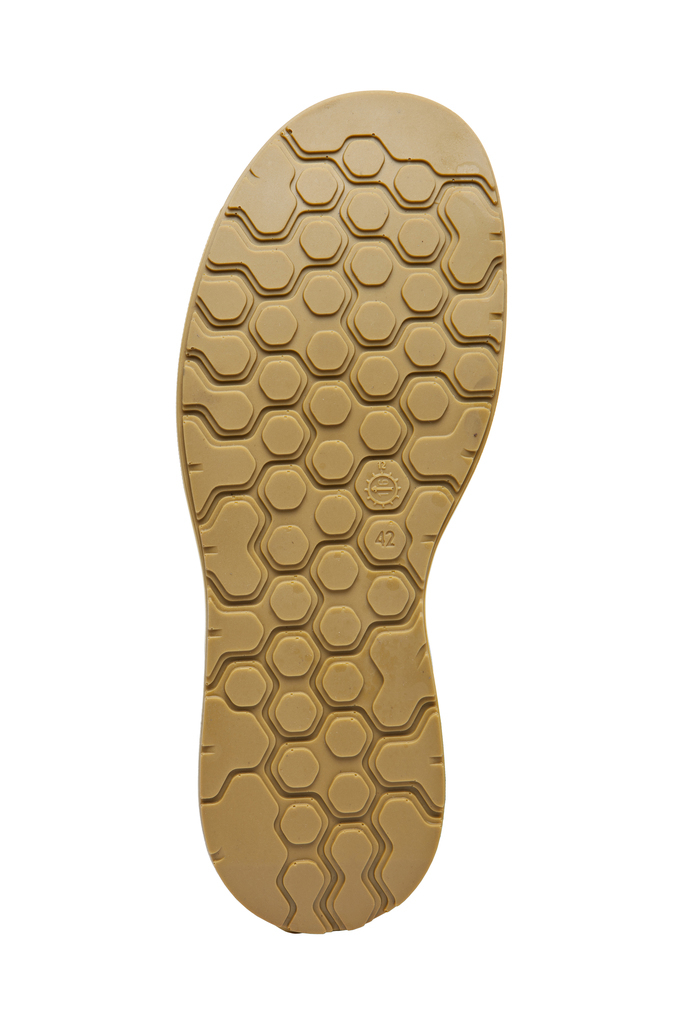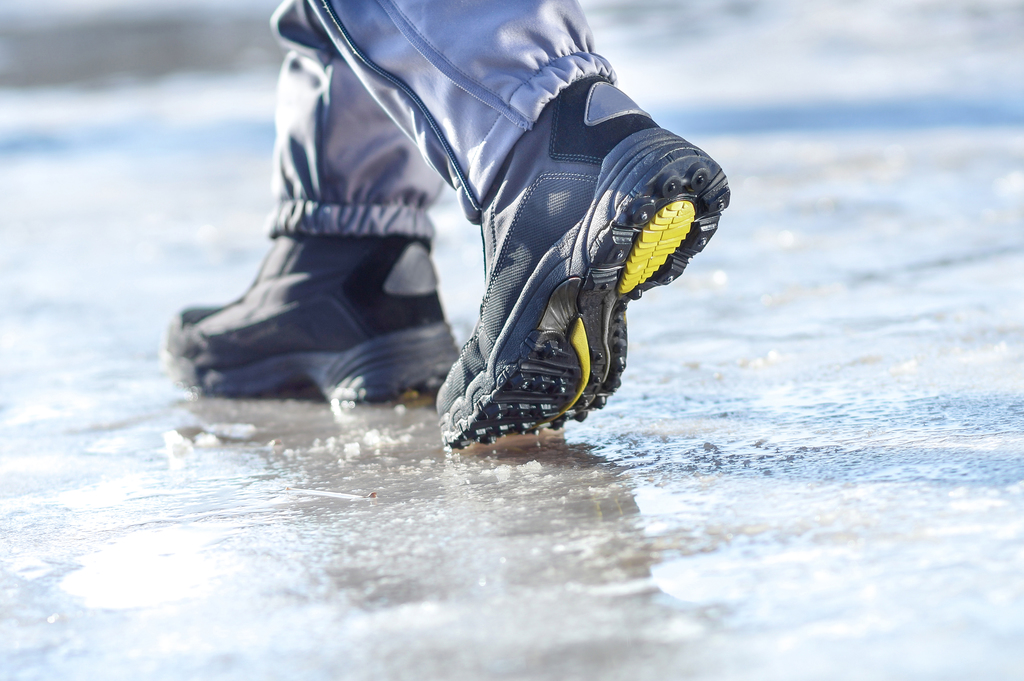
Kelly Rose
Editor

Kelly Rose
Editor
Preventing slips and trips require a combination of risk assessing work areas and ensuring potential hazards are well-managed. According to Peter Upcott, the correct safety footwear the right safety footwear can help workers stay safe.
SLIPS AND trips are a common and often life changing hazard in the workplace. HSE statistics show that 95% of major slips and trips results in broken bones. Slips and trips represents 33% of reported major injuries and account for 21% of all liability claims. 65% of fall related injuries result from falls from same-level surfaces because of a slip or trip. The average time off work as a consequence of an injury from slip or trip at work has been measured as 11 days.
Preventing slips in the work-place requires a detailed risk assessment of all work areas and constant monitoring of floors/walkways to ensure temporary hazards are managed. This should include wear and tear of floor surfaces to monitor replacement or repair; quickly dealing with liquid spills and dealing with the cause; managing the impact of changing weather conditions which could cause slippery surfaces e.g. ice.
Implementing a best practice process for managing potential slip hazards will help to prevent future occurrences. The process starts with the creation of a risk mapping diagram, detailing the analysis of all reported and ‘near-miss’ slips and trips over a time period (e.g. 12 months) and establishing root causes of the issues. The map will highlight hotspots and major causes, which will assist the management team to take the necessary steps or investment decisions to prevent the risks reoccurring.
There are three main control measures, which have been identified by the HSE, to manage slips and trips issues in the workplace.
(a) Prevention of floor contamination
(b) Prevention of trips
(c) Identification of suitable floors and footwear for the environment
Preventing floor contamination involves controlling work activities within the working environment. In a work location with machinery, regular checks and maintenance are crucial to ensure that any spillages such as water, oil, powders, food are cleaned up promptly and effectively.
Preventing trips involves managing the work environment, ensuring floors are even and free from holes, as well as ensuring that temporary cables or tools are highlighted to prevent workers from potential injury. Stairs are one of the most common trip hazards and should be well constructed, regularly maintained and fitted with handrails.
Of course, not all hazards can be foreseen – accidental spills happen, and icy weather conditions can be hard to predict. Good quality, well-designed footwear, with features suitable for the floor in each working environment, will help to mitigate these unforeseen issues and help employees to stay on their feet in all situations, reducing risk and improving productivity rates.
Safety footwear should be carefully selected according to the floor surface, to give appropriate slip resistance in each specific environment. Safety footwear is rated according to the ISO20345 safety footwear standard, which identifies three levels of slip resistance, SRA, SRB and SRC. There is a minimum slip resistance required to pass each test.
SRA – footwear has been tested on ceramic tile wetted with dilute soap solution
SRB - footwear has been tested on smooth steel with glycerol
SRC - footwear has been tested on both the above conditions
The highest slip resistance rating is SRC, the most common rating specified by health & safety professionals. SRC rated footwear gives the highest slip resistance rating for smooth, slippery surfaces, however, employers can have difficulty identifying how effective each SRC sole pattern would be in their specific environment. When the environment is more uneven, such as working on ballast or outdoors in construction or utility environments, having good side to side grip is important for stability and to prevent slipping. Safety footwear with an SRC rating is not always the best solution for uneven surfaces. Often safety footwear with good side to side grip will be SRA rated due to the tread pattern that is used.
Safety footwear is often selected based on the cost to the employer and what has historically been used by employees at the work location. The cost of PPE is clearly an important consideration when budgeting a project. It has been proven that good quality safety footwear helps to reduce complaints around comfort which can lead to sickness and absence due to joint and back pain impacting efficiency and productivity. If the footwear is ill fitting, this can also cause issues with workers stumbling or being unsteady on their feet. Increasingly, employers are giving their employees a choice of “upgrading” or selecting alternative safety footwear styles at a higher cost. Not only does this show support for employees, improves motivation and engagement, but more importantly reduces complaints and can improve productivity.
Other ways of preventing slips and trips in the workplace include:
Lighting– Proper lighting inside and outside the workplace can help illuminate areas that are frequent accident hot spots. Often steps and other hazards can be hidden by darkness or shadows;
Signage– Highlighting potential problem areas with clear, well-placed signage can help to change behaviour and increase awareness and attentiveness; and
Surface coatings and non-slip matting– inherently slippery surfaces, such as tiled or metal flooring, wet and polished surfaces can be improved by adding slip resistant coatings or non-slip matting.
Footwear selection
Footwear selection needs to take account of several factors in addition to matching the slip resistance required relative to the surface or surfaces being walked on. Comfort, durability and the safety features required (e.g. midsole protection) are all important considerations. By involving employees in the selection process will improve employee engagement.
Select safety footwear that employees find comfortable and attractive to wear – suitable footwear that eliminates most complaints will often be the most economical long-term option. Employees will enjoy wearing the shoes and will take greater care of them, increasing footwear lifetime.
Discuss the main surfaces and contaminants in the workplace with footwear providers and manufacturers and seek their advice – arranging trials of safety footwear solutions will demonstrate their effectiveness in your specific environment. Manufacturers are constantly seeking improvements through product innovation and rely on customer feedback to initiate new product designs. The footwear tread pattern and type of sole compound are both important for slip resistance. In general, a softer sole compound a closer tread pattern design and the ability of the tread to dispel liquids quickly and effectively work well on floors with potential liquid spills and most indoor environments. A wider and deeper tread pattern tends to work better on uneven solid surfaces and outdoor environments.
Slip resistance properties can change over time as the sole becomes worn – you should consider having an inspection system to check and replace footwear when it becomes potentially dangerous to wear.
The right solution
Accidents as a consequence of slips and trips can be expensive due to the severity of the injuries caused. Utilising the tools available from HSE can significantly reduce the risk of slips and trips and as a consequence reduce the potential liability that accidents can cause.
Utilising safety footwear as part of the solution is a proven approach. Safety footwear can be expensive, but like any PPE, you often get what you pay for. Design factors such as the flexibility of the upper and sole, the width of the footwear and the quality of materials used can really influence long term comfort and durability of the product. There is a lot to consider when selecting the right safety footwear from a commercial perspective as well as the health, safety and engagement of your employees. Allowing your employees to trial different footwear models, selected based on their suitability for the floor surface types they are working on and the potential risks, will give you on the job feedback and engage the workforce in the selection process.
Specifying and mapping the main surfaces and potential hazards in your specific environment will really assist safety footwear manufacturers and suppliers to match their products to your environment and ensure your workforce stay safe.
Peter Upcott is the owner of PPE Specialist. For more information, visit www.ppe-specialist.com



The Studio
Oxshott Farm
Hawkley
Liss
GU33 6LR
UNITED KINGDOM
07720 678393